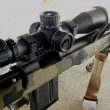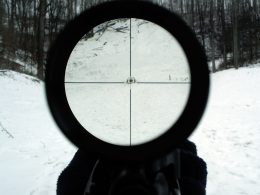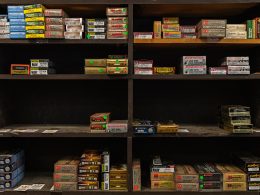This information is based upon the U.S. Army’s sniper training programs at Ft. Benning’s Sniper School and Ft. Bragg’s Special Operations Target Interdiction Course.
What is a sniper, what are his tasks?
Snipers are highly trained soldiers specializing in target shooting over long distances. But they also have to train in how to be covert, camouflaged, and how to infiltrate and observe. The sniper is a military strategist needed for a variety of missions on the battlefield.
This is why a sniper needs to be multi-skilled in estimating ranges, searching areas, locating and identifying sounds, and movement, using cover and concealment, being able to analyze maps, aerial photos, sketches, reading a compass, recognizing enemies, moving without detection and being able to withstand long periods of waiting.
Your Mission as a Sniper
A sniper plays an important role in reconnaissance. Being masters of stealth, snipers slip behind enemy lines or go into dangerous situations to collect intel about the enemy’s size, strength, and location. Snipers are also used as support for troops and for securing positions. Snipers are also tasked to take out key targets of the enemy such as personnel, supplies, and communications equipment.
Employment of Snipers
Snipers are used as part of the unit commander’s tactical plans. When employed out in the field, troops need to keep clear of the areas occupied by the sniper teams.
Your Equipment
The main parts of a sniper’s equipment are the sniper rifle, ammunition, and camouflage. Snipers need to travel light and only carry mission-critical components. Part of this ensemble will also include binoculars, a spotting scope, a watch, map, and compass; however, the sniper should not be fully dependent on these items and still be able to make range estimations and read direction manually. Accessories for note taking and weapon cleaning must also be included.
There are limitations on how much ammunition can be carried due to available space and not to overload your weight. Field reloading equipment has its drawbacks because of the time it takes and weight of the extra equipment. Ammunition resupply is critical, but portability and accuracy are key considerations.
Rifles have distinct sounds and using a unique weapon could draw attention and if you choose to use a similar rifle as those used by the enemy, it’s imperative that your troops are aware of this to avoid becoming their target.
Ultimately, the nature of the mission will prescribe what essential equipment you need to carry. If ammunition resupply isn’t a factor and your task is intended to be a quick in and out, a .300 Winchester Magnum is a good choice.
What It Takes to Be a Good Sniper
You need specific personality and physical traits to be an efficient sniper and being an accurate shooter goes without saying. You have to be disciplined, patient, resourceful, and astute. Snipers never shoot at innocent civilians or livestock. Depending on the type of mission, snipers can work alone or in a team.
It’s paramount that you can determine which shots are worth taking because any shot you take will heighten the risk of being discovered, captured, or killed. This is where discipline comes in. Having a quick temper and being impulsive is a deadly combination in a sniper. You need to be the opposite to withstand the wait, and cope in a solitary environment for days or even weeks alone. And even though you may spend long periods of time stalking a target, it’s possible that you may not ever get your shot. In which case, you have to be able to walk away.
While you’re spending hours watching and waiting for the one shot, your level of concentration cannot decline. Being easily distracted, getting bored, or daydreaming are fatal mistakes. Because it’s possible to get tired and even lose focus for a minutes, sniper teams are generally preferred.
Being astute is key and affects everything a sniper does. It’s about picking the best position with the easiest entry and exit routes, being fully prepared, having a backup plan, and knowing what to do when things don’t go according to plan. A good sniper needs to anticipate every possible outcome and do what it takes to get the best result despite the potential difficulty.
Last but not least is marksmanship and it’s not just about accuracy but it’s being able to keep composed in any situation especially when engaging with an enemy target. Being a good shot at long range targets means you more distance from the enemy, which means being able to escape quickly and safely when needed.
Sniper Field Training Exercises
Successful missions need precision in placing resources and equipment in the right place at the right time, and it requires the proper training of everyone involved. Sniper training incorporates individual coaching to perfect the tasks required by a sniper before moving onto sniper operations. Field Training Exercises (FTXs) are critical and are intended to simulate real-life sniper missions.
FTXs are beneficial for leaders to apply their skills and add to their experience that is applied in real combat situations. These exercises help the unit learn from each other and integrate lessons into their Standard Operating Procedure (SOP) that will ensure operational readiness. Leaders need to be trained as well as the individual sniper so everyone in the unit has an appreciation and understanding of the capabilities in the team. The FTXs prepare combatants for the reality of what happens and what can happen in a combat situation. Through intensive training, the unit adapts to the deprivations using bare essentials that are synonymous with life in the field. These exercise are not meant to be comfortable or easy, and there is no compromise because that’s not how real-life combat works.
FTXs also train snipers and team to develop logistical routines and how to manage sleep cycles, supply replenishment, as well as eating and hygiene.
A productive sniper FTX will include detailed planning, complete preparation, rigid execution, and an evaluation afterwards, known as a Detailed After Action Review (AAR).
Evaluators are a critical and need to be assigned to every sniper team in order to observe and provide reviews once the FTX is complete as it offers a chance to learn lessons and improve.







![Best .30-30 Scopes For Lever Action Rifles [And Mounts]](https://www.snipercountry.com/wp-content/uploads/2018/06/Best-.30-30-Scopes-For-Lever-Action-Rifles-And-Mounts-260x195.jpg)

